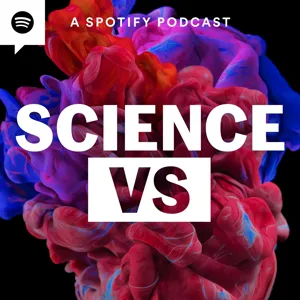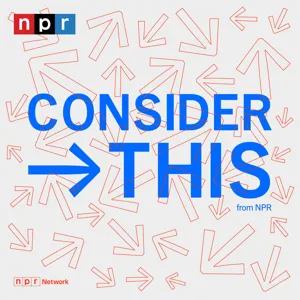Podcast Summary
Focusing on effective gun regulations: Implementing regulations to control gun sales, types, and activities can help reduce gun deaths without relying on a gunless world.
While the dream of a gunless world may be appealing, the focus on reducing gun deaths in America lies in implementing effective gun regulations. This includes controlling who can buy guns, what type of guns they can purchase, and what activities they are permitted to engage in with their firearms. The process of buying a gun in America involves filling out a federal form called the 4473, which includes personal information and background checks through the National Instant Criminal Background Check System. These checks can result in approvals, denials, or further research. Gun regulations aim to reduce gun deaths without relying on magic solutions or a gunless world. Instead, they focus on evidence-based approaches to improve public safety.
Background checks have holes allowing some criminals to buy guns: Criminals can obtain guns through private sales or unregulated channels, and focusing solely on improving background checks may not be a comprehensive solution to gun violence in the US.
While the US has laws prohibiting certain individuals from buying guns, such as those with criminal records or mental health issues, the background check system has holes that allow some of these individuals to legally purchase firearms. This is a significant issue, as many criminals obtain their guns through private sales or unregulated channels where background checks are not required. According to a study, states with the poorest background check systems tend to have higher gun homicide rates. However, focusing solely on improving background checks may not be a comprehensive solution, as a large percentage of criminals acquire their guns outside of licensed dealer sales. Instead, a multi-faceted approach that includes stricter regulations on private sales and removing certain types of guns from the community may be necessary to effectively address gun violence in the US.
Preventing all gun crimes and suicides is complex: Half of gun criminals pass background checks and most gun deaths are suicides, making prevention a complex issue. Mental health professionals have limited ability to predict future violent behavior.
Despite efforts to improve background checks and include more mental health information, preventing all gun crimes and suicides is a complex issue. The available evidence suggests that about half of gun criminals do not meet any prohibiting conditions under federal law and would have passed background checks. Additionally, most gun deaths in America are suicides, and improving record keeping may not significantly reduce these numbers. While mental illness is a concern in mass shootings, studies show that the majority of violent crimes are committed by people with no known severe mental illness. Mental health professionals have limited ability to predict future violent behavior with certainty. Therefore, while these measures could potentially help reduce gun deaths, they are not a foolproof solution. Another approach is buying back guns from the community, but this alone cannot solve the problem. Ultimately, a comprehensive solution likely involves a combination of approaches, including mental health care, gun control legislation, and community-based interventions.
Gun buybacks may not significantly reduce gun violence: Despite removing a large number of guns, scientific evidence shows limited effectiveness of gun buybacks in reducing gun violence
While gun buyback programs may provide a sense of security by removing a large number of guns from the streets, scientific evidence suggests that their effectiveness in reducing gun violence is limited. For instance, a study on gun buybacks carried out in Buffalo, New York, concluded that these programs did not significantly reduce homicides. Australia, known for its strict gun laws, implemented a massive gun buyback program after a mass shooting in 1996. The ban on semi-automatic and automatic weapons led to a significant decrease in mass shootings, and the overall risk of dying by gunshot in Australia dropped by half in the years following the buyback. However, it's important to note that the effectiveness of gun control measures can depend on various factors, including the specific context and implementation of the policies.
Australia's strict gun control laws reduce gun-related deaths: Australia's strict gun control laws have led to fewer gun deaths, including homicides and suicides, compared to the US despite similar population sizes and vibrant shooting cultures.
Australia's strict gun control laws, implemented after a mass shooting in 1996, have been effective in reducing gun-related deaths, including homicides and suicides. The discussion highlighted that the gun death rate in Australia has been declining for over a decade while staying relatively high in the United States. Despite having a similar population size, Australia has fewer guns and fewer gun deaths. The Australian government implemented various rules around buying and keeping guns, requiring proof of a genuine reason to own one, a license, registration, and reporting when sold, lost, or stolen. These laws enable the government to track how guns move around the country. The shooting culture in Australia is vibrant, but the low gun homicide and suicide rates demonstrate that having many guns does not necessarily lead to more gun deaths.
Registration and personal responsibility are key to effective gun control: Registration leads to reduced gun theft, making illegal guns harder to enter the market, but ongoing enforcement and reporting requirements are crucial for effective gun control measures.
Effective gun control measures go beyond just gun buybacks and involve registration and personal responsibility. The Australian experience shows that registration led to a significant reduction in gun theft, making it harder for illegal guns to enter the market. Contrastingly, in the US, without strict reporting requirements, straw purchasers could easily claim stolen guns as an excuse. The UK, with similar gun laws, offers an intriguing comparison. While they had registration, licensing, and a ban on semi-automatics, the impact of banning handguns was less clear. This highlights the importance of ongoing enforcement and reporting requirements in making gun control measures effective.
Handgun ban in UK didn't decrease gun crime immediately: Despite handgun ban, gun crime increased, and comprehensive national laws are most effective in reducing gun violence
The handgun ban in the UK in 1996 did not lead to an immediate decrease in gun homicides as expected. In fact, gun crime involving both real and fake firearms increased, and the number of gun homicides remained low but stable. While better record keeping and expanded background checks could potentially prevent some gun violence, they would not be a complete solution as many criminals obtain guns illegally. Buying back guns from owners or implementing stricter licensing requirements may have some impact, but comprehensive national laws seem to be the most effective solution based on evidence from countries like Australia and the UK. It's important to note that gun violence is complex and requires a multifaceted approach, and no single solution will eliminate it entirely.
Culture and historical context shape attitudes towards guns and gun control: Mass shootings have influenced societal shifts in gun control policies in Australia and the UK, highlighting the importance of understanding cultural and historical contexts in the gun control debate.
When it comes to guns and gun control, culture and historical context play significant roles in shaping attitudes and policies. This was evident in the discussions with experts Peter Squires from the UK and Philip Albers from Australia. Both noted that mass shootings in their countries served as tipping points, leading to societal shifts in views on guns. The Australian example showed that even professional shooters, who might be expected to strongly support gun ownership, could have a different perspective. Additionally, the US context, with its constitutional protections for gun ownership, creates a unique dynamic that is not present in other countries. These cultural and historical differences underscore the importance of understanding the specific contexts in which gun control policies are being debated and implemented.
Mistakes can happen despite fact-checking: Even with fact-checking and consultations, mistakes can occur in reporting. Viewers are encouraged to keep the team informed and engage in respectful dialogue on scientific topics.
Even the most knowledgeable and fact-checked sources can make mistakes. In the latest episode of Science Versus, the team discussed the plural form of the state bird of Pennsylvania, the ruffed grouse, and the plural form of the sea creature, the octopus. The team initially made an error in referring to the state bird, calling it a "ruffled grouse" instead of the correct "ruffed grouse." This mistake led to a flurry of corrections from viewers. Regarding the plural form of octopus, the team consulted with a lexicographer from Oxford Dictionary, Katherine Martin, who confirmed that the correct plural form is "octopuses." However, the team also reached out to several academics, all of whom confirmed that "octopuses" is the correct plural form. Despite their best efforts to fact-check and double-check their information, mistakes can still occur. The team encourages viewers to keep them accountable and to reach out with corrections or clarifications. The episode also touched on the topic of organic food and whether it's worth the extra cost. The team acknowledged that people have different opinions on the matter and encouraged a respectful dialogue on the topic. In conclusion, while the team strives for accuracy and factual information, mistakes can still happen. The team encourages viewers to keep them informed and to engage in respectful dialogue on various scientific topics.






